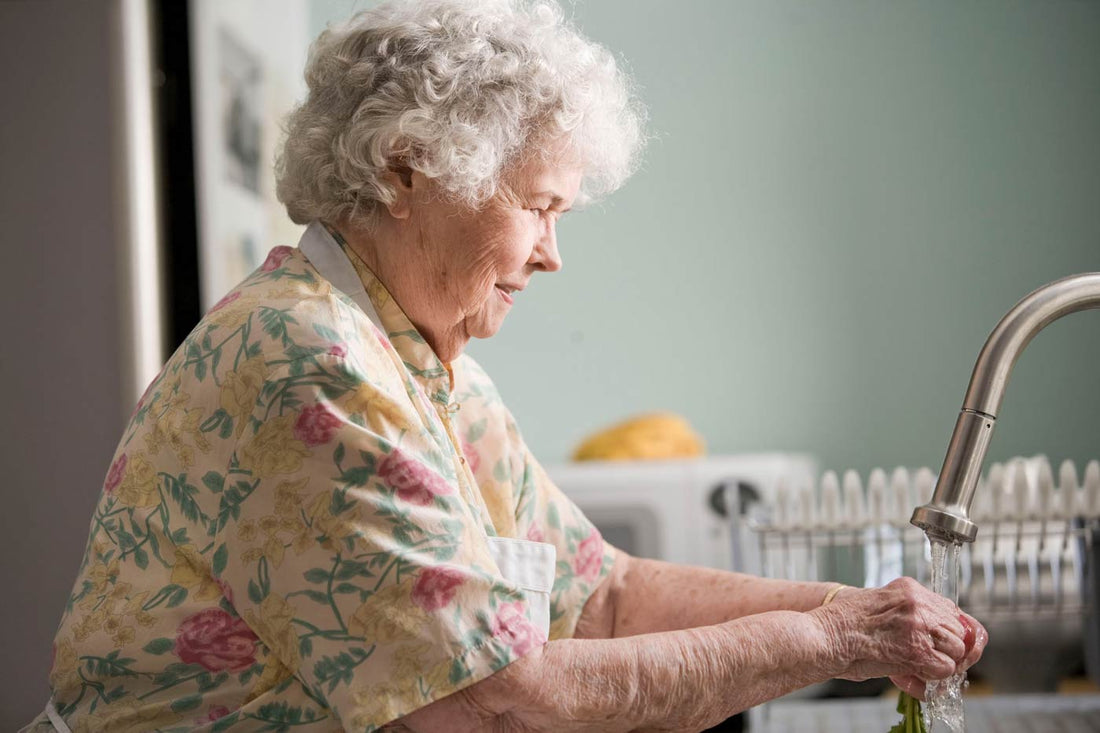Understanding and Addressing UTIs in the Aging Population

Urinary Tract Infections (UTIs) present unique challenges in assisted living facilities, where residents often face underlying health issues and communal living conditions. UTIs are not only a discomfort but also a significant health concern, especially among the elderly population. As individuals age, various factors contribute to an increased susceptibility to UTIs, making them more prevalent and impactful. In this article, we address the unique challenges associated with UTIs, the reasons behind their heightened vulnerability, explore their implications for the elderly and discuss strategies for prevention and management.
Aging and the Urinary Tract
A Complex Relationship
As the body ages, physiological changes occur that can impact the urinary tract. Muscle tone in the bladder and urethra may decrease, leading to incomplete emptying of the bladder. Additionally, hormonal changes in postmenopausal women can alter the vaginal flora, making them more prone to UTIs. These age-related changes create an environment where bacteria can thrive and increase the risk of infection.
Researchers from Columbia University evaluating nursing home infection control report that across the approximately 15,700 nursing homes, there are an estimated 5.2 infections per 1000 resident care days. This translates to 2.8 million infections annually, the majority of which are UTIs. In addition, many of these infections are caused by multidrug resistant organisms. Up to 79% of nursing home residents receive antibiotics at least once per year. The frequency of asymptomatic urinary infection, or asymptomatic bacteriuria among residents of LTCFs is unprecedented. Prevalence surveys in multiple facilities consistently report that 25%– 50% of women and 30% of men have positive urine cultures. In a cross-sectional study of LTC residents seen in the emergency department for UTI, multiple drug resistant (MDR) bacteria were identified in 39% to 80% of the isolates. Individuals particularly at risk are those with indwelling catheters.
UTIs are the most common cause of bacteremia and hospitalization in long-term care residents, and Catheter Associated Urinary Tract Infections (CAUTIs) are the single most common healthcare acquired condition. In 2018 costs to Medicare for treatment of CAUTIs as an inpatient ranged up to $29,743. UTI treatment represents at least 50% of all antibiotic usage.
Reduced Mobility and Functional Decline
Limited mobility and functional decline associated with aging contribute significantly to the increased incidence of UTIs. Reduced mobility may lead to difficulties in reaching the bathroom in a timely manner, incomplete bladder emptying and an increased likelihood of catheter use—all of which can elevate the risk of bacterial colonization and infection.
Underlying Health Conditions
A Contributing Factor
The elderly often contend with a myriad of underlying health conditions, ranging from diabetes to kidney disease. These conditions can compromise the immune system and impair the body’s ability to fight off infections effectively. Individuals with weakened immune systems are more susceptible to bacterial invasions, making UTIs a common occurrence among the elderly.
Catheterization and Long-Term Care: A Double-Edged Sword
In long-term care settings, catheterization is often necessary for elderly individuals with certain health conditions. While catheters aid in urine drainage, they also pose an increased risk of UTIs. Improper catheter care, a common concern in healthcare facilities, can introduce bacteria into the urinary tract, leading to recurrent infections.
Altered Immune Response
Immunosenescence
Immunosenescence, the gradual decline of the immune system with age, is a significant factor contributing to UTIs in the elderly. The immune system’s ability to recognize and respond to pathogens weakens, making the elderly more susceptible to infections. UTIs can become recurrent and challenging to manage in the context of an age-related decline in immune function.
Menopause and Vaginal Changes
Impact on UTI Risk
In postmenopausal women, hormonal changes result in alterations to the vaginal flora. The decline in estrogen levels can lead to a reduction in beneficial Lactobacillus bacteria, allowing pathogenic bacteria to flourish. These changes create an environment conducive to UTIs, adding an extra layer of vulnerability for older women.
Polypharmacy: Medication-Related Challenges
The elderly often manage multiple chronic conditions simultaneously, necessitating the use of multiple medications. Polypharmacy, while essential for managing health issues, can have unintended consequences. Some medications may alter the pH of the urine, disrupt the natural balance of the urinary tract or compromise the immune system, increasing the risk of UTIs.
Dehydration: A Common Culprit
Dehydration is a prevalent concern among the elderly, often due to a combination of factors such as reduced thirst sensation and medication side effects. Inadequate fluid intake can concentrate urine, making it more conducive to bacterial growth. Encouraging sufficient hydration is a crucial element in UTI prevention for the elderly.
Chronic Conditions and UTI Predisposition
Certain chronic conditions prevalent in the elderly population, such as diabetes and neurogenic bladder disorders, can predispose individuals to UTIs. These conditions may disrupt normal bladder function, impair immune responses and create an environment where bacteria can thrive, leading to increased UTI susceptibility.
Preventive Measures: Empowering the Elderly
While the elderly are more susceptible to UTIs, there are proactive steps that can be taken to reduce the risk. Adequate hydration, good hygiene practices, regular bathroom breaks and monitoring for signs of UTIs are essential components of preventive care. Additionally, healthcare providers should be vigilant in managing underlying health conditions and addressing age-related changes that contribute to UTI vulnerability.
Prioritizing UTI Prevention in Elderly Care
Understanding why UTIs affect the elderly is crucial for providing effective care and implementing preventive measures. As the aging population continues to grow, addressing the unique challenges posed by UTIs in the elderly becomes an increasingly important aspect of healthcare. By recognizing the multifaceted factors contributing to UTI vulnerability and adopting comprehensive preventive strategies, we can enhance the quality of life for the elderly and mitigate the impact of urinary tract infections on their health.



